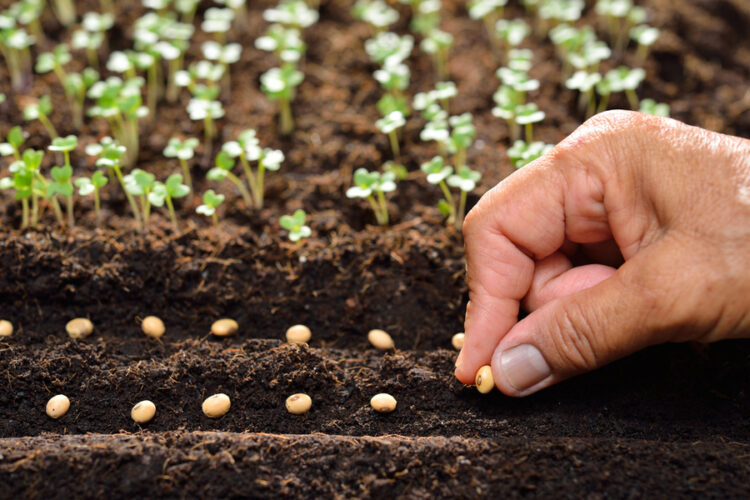In order to make the most of your kitchen garden, you need to think about planting more than one crop in the same patch of ground during the same season. This is called succession planting and it requires careful planning.
Succession planting ~ sowing the right crop at the right time ~ ensures multiple harvests. Succession cropping is sowing or planting one crop immediately after an earlier crop has finished in order to achieve a succession of harvests.
There are different ways of going about this.
Same Vegetable, Staggered Plantings: Space out plantings of the same vegetable every 2~4 weeks.
Different Vegetables in Succession: Some crops, like peas, have short growing seasons and the space they were using can be replanted with a later season crop, like aubergine. This also ensures that your soil does not become depleted, as different types of plants need different amounts of nitrogen, phosphorus and potassium, as well as other nutrients.
Two Vegetables in the Same Spot: Often you can seed the early season vegetable at the same time you are planting the later one. Intercropping and square meter planting is an excellent way to squeeze even more productivity from your vegetable garden. (Intercropping, companion planting, polyculture – these are all terms for planting different plants or vegetables together in the same space at the same time.)
This also helps to make the most of your water, which we are being strongly urged to conserve.
Same Vegetable, Different Maturity Rates: An easy way to keep your harvest coming in is to choose more than one variety of a crop and make then early, mid and late season varieties.
Efficient smallholders will be harvesting their first crops at the height of summer and they can then plant the second crops of the season. These vegetables will be able to take advantage of the warm soil and high light levels. Now you can plant a crop that grows quickly enough to be harvested before the first frosts or it can be left in the ground to be picked during winter.
Having cleared the first crop, clean the ground of any weeds, then use a rake to break up any clumps and tamp the soil down before raking flat. Good, rich soil that had organic matter added for the previous crop shouldn’t require any more, but if your soil does need a boost now’s the time to add a thin layer of compost before sowing or planting.
Planning your successional sowings and plantings in advance will make it a lot easier to work out what can follow on from what. The second planting will need to be of seedlings that you have been growing beforehand or that you have bought. These include many of the brassicas, such as kale, cabbage and cauliflower, as well as lettuce. Carrots will also grow through the colder months.
The second planting will need to be of seedlings that you have been growing beforehand or that you have bought. These include many of the brassicas, such as kale, cabbage and cauliflower, as well as lettuce. Carrots will also grow through the colder months.
In Gauteng this summer we have been told to anticipate high temperatures and late rains, which will also affect your choice of vegetables. You might also consider erecting some shade cloth for plants that don’t do well in extreme heat.

